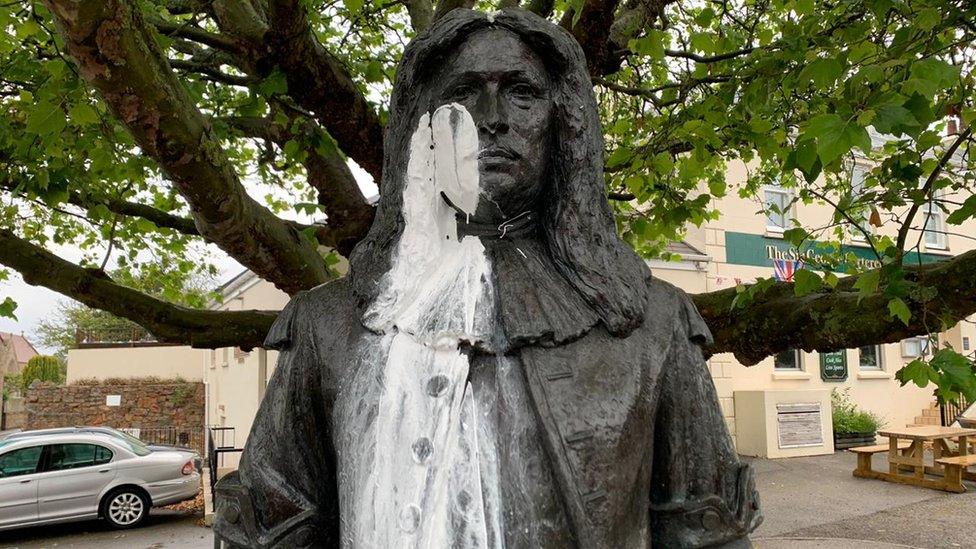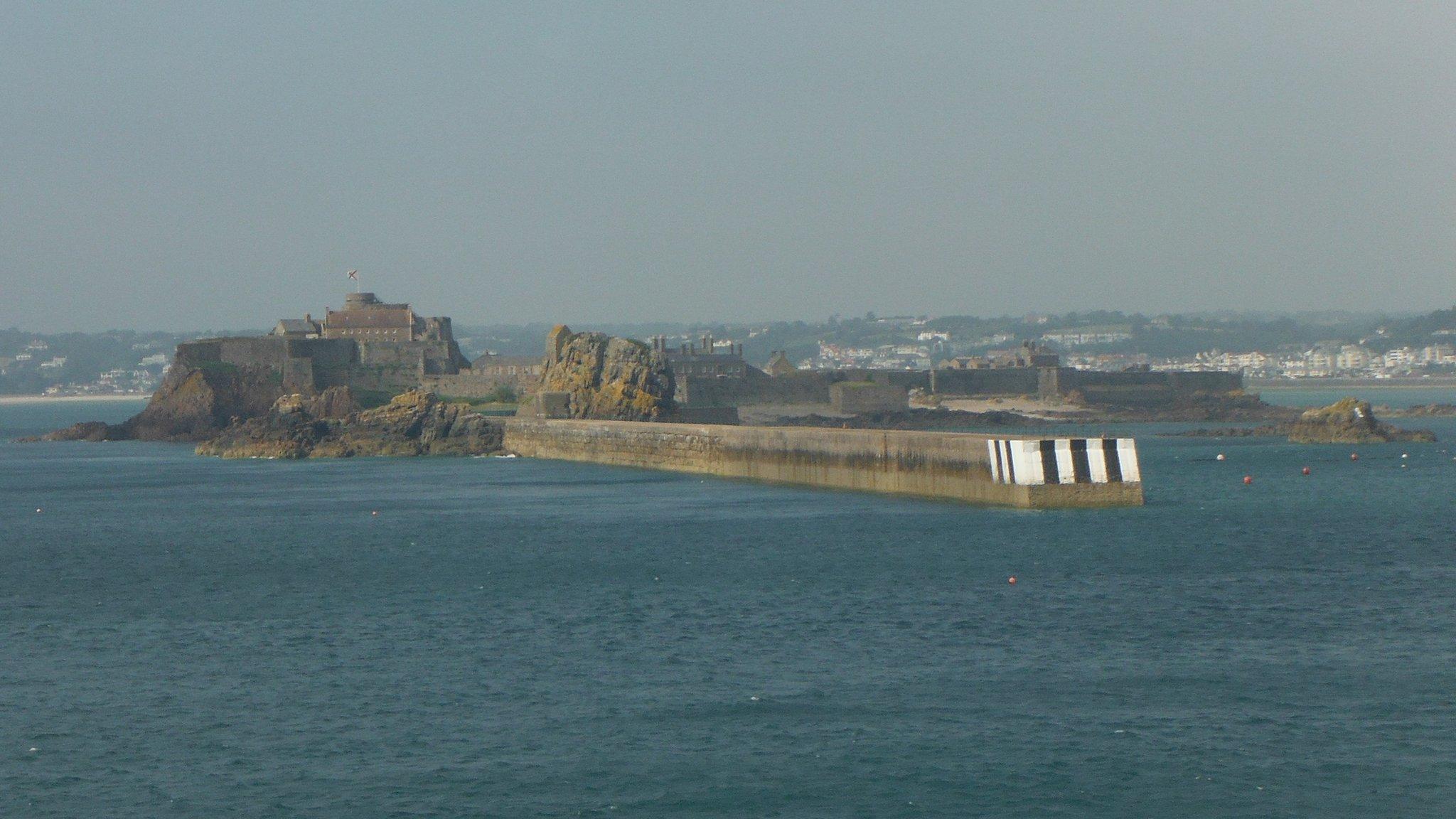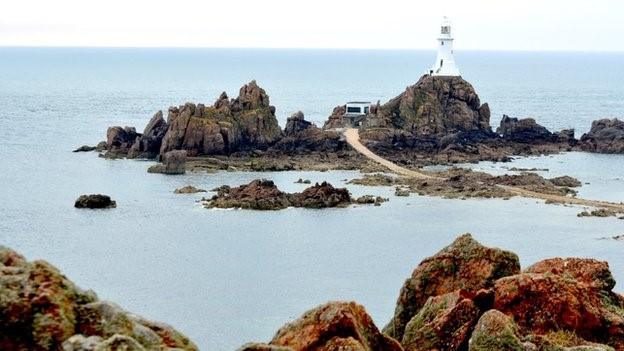Jersey statue of slave trader defaced with paint
- Published

The spill is thought to have happened on Wednesday evening in St Peter, Jersey
The statue of a slave trader in Jersey has been covered with white paint.
The sculpture of Sir George Carteret, a 17th Century bailiff and lieutenant governor of Jersey, was targeted on Wednesday night.
Some had called for the removal of the statue in St Peter's square due to Sir George's role in the Royal African Company (RAC), a group of merchants that traded slaves in West Africa.
Jersey Police said it was being treated as a case of malicious damage.
Some statues in the UK have been removed or are being reviewed as a result of anti-racism protests.
Deputy Montford Tadier said: "George de Carteret was somebody who made his profit off the back of dehumanising other human beings and trading them as slaves.
"So it's quite right, in the modern day context, that we question why a statue was put up to him by the constable of St Peter in 2014."

Former constable John Refault said the statue acknowledged "probably the most important" person in Jersey's history
Prof William Pettigrew, of Lancaster University, described the RAC as "the single most prolific trader of slaves".
The company, funded by Sir George and others, transported about 150,000 slaves from West Africa to the Caribbean in the 17th Century.
"There's no doubt he knew exactly what his money was going towards," Prof Pettigrew said.

Sir George Carteret
Born in St Peter, Jersey in 1610
Received a knighthood after serving as a naval officer and lieutenant governor of Jersey
A Royalist who helped to shelter the prince and future King Charles II in Jersey during the English Civil War
He was given a large grant of land for his help, which became known as New Jersey in North America under his charge

The former Constable of St Peter, John Refault, said he had commissioned the statue to acknowledge "probably the most important" person in Jersey's history.
"I don't think we should forget the bad, because remembering the bad stops us from doing the same thing over again," he said.
- Published10 June 2020

- Published16 September 2015

- Published8 January 2014
